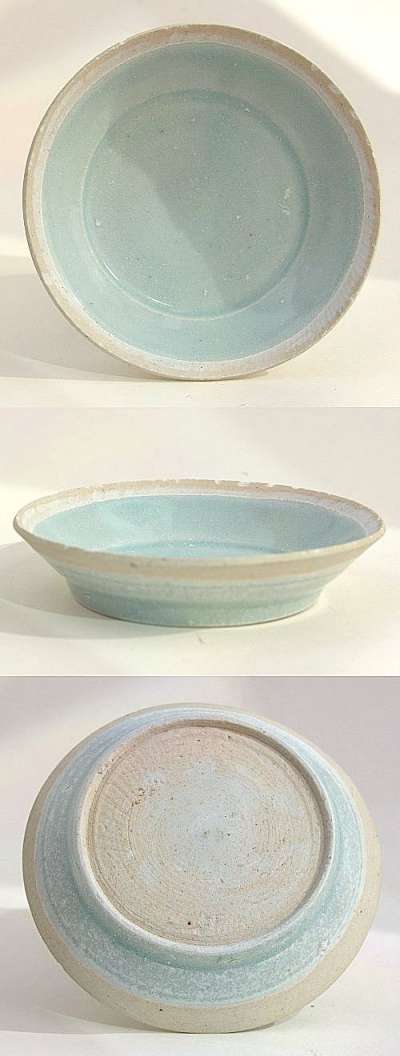
A qingbai glazed dish, Song dynasty, Jiangxi province.
Starting from the early Northern Song dynasty, the Xinping kilns in the Jiangxi province achieved success in producing a very fine white-bodied porcelain ware covered with an illuminous glaze of icy blue tinge, earning the name qingbai, 'blue white'.
The Xinping kilns were at the time already active making a rustic celadon ware for the local market.
Due to this success, during the Song dynasty emperor Jingde's reign (1004-1007), Xinping was renamed to Jingdezhen meaning "Jingde's market".
Qingbai remained popular from the late 10th century up until the Yuan dynasty and the introduction of blue and white porcelain, to which decoration this body and glaze combination did not lend itself very well. Essentially a folk porcelain, Qingbai was sometimes referred to as Rao yu meaning, Jade from Rao, since Rao zhou was the name of the administrative area in which Xinping was situated.
The bluish tone comes from naturally occurring iron impurities in the glaze being fired in an reducing kiln atmosphere (smoky).
The special characteristic comes from the body, which is natural porcelain clay, and its glaze, which is made by diluting in water the porcelain body material mixed with lime.
Qingbai made its way all over China and were exported to other localities in Asia and as far away as Africa. Qingbai was developed in Jiangxi province (Jingdezhen/Hutian area) and production is archaeologically confirmed in Fujian, Guangdong, Guangxi, Zhejiang, Hubei, Hunan, Anhui and Henan provinces, but none really seems to have been able to equal the Hutian wares in quality.
From the early 20th century antique dealers started to call this ware Yingqing (Shadow Blue).
The exquisite quality of qingbai porcelain was widely recognized, and the Southern Song ceramic historian Jiang Qi mentioned in his treatise Tao ji (Ceramic Records) that white porcelain produced at Jingdezhen was so refined and pure that it was known as Raoyu, 'jade of Rao'. Raozhou was the name of the region in which the Jingdezhen kilns were located.
The shape and decorations on qingbai wares were often fashioned after the Northern Ding ware and decorations inspired after contemporaneous silver wares.
Rims on qingbai bowls and dishes were also sometimes fitted with a silver band in the same manner as the Northern Ding wares, to cover the unglazed rims.
A